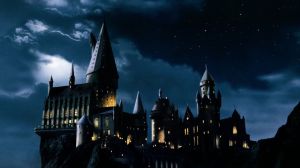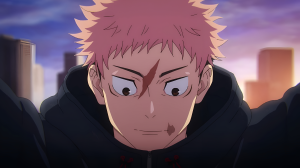In one of the few bright rays of light to grace this year, Avatar: The Last Airbender, the beloved cartoon that won an Emmy Award and a Peabody Award, among other accolades, became available to stream in-full on Netflix. Many consider Avatar one of the top animated television series of all time if not one of the best television shows ever, cartoon or otherwise. It gracefully blends arcs about its flawed, lovable, relatable characters with themes of colonialism, authoritarianism, and generational change. Throughout three seasons, the Nickelodeon cartoon tells a satisfying fantasy tale about Avatar Aang’s awakening, training, and the final battle with Fire Lord Ozai to end the Hundred Year War. The worst part about Avatar is that it ends after 61 episodes. But there’s good news. While the television series may end with “Sozin’s Comet,” the story of Avatar: The Last Airbender continues.
Videos by ComicBook.com
No, we’re not talking about sequel series The Legend of Korra, though that series will soon be on Netflix as well. The stories of Avatar Aang and the rest of Team Avatar continue immediately following Fire Lord Zuko’s coronation in the pages of a series of graphic novels published by Dark Horse Comics. There are six graphic novel trilogies thus far, each progressing Aang’s story past the end of the television show. And the best news is that they live up to the television series’ high standards.
That may be, in part, due to the involvement of Avatar‘s creators, Michael Dante DiMartino and Bryan Konietzko. Dark Horse landed top-notch comics creators to handle the franchise’s transition. Gene Luen Yang, the cartoonist behind such celebrated comics as American Born Chinese, Boxers and Saints, and Dragon Hoops, wrote the first five trilogies. The Japanese art team Guruhiru (Chifuyu Sasaki and Naoko Kawano) handled the artwork. DC Comics fans may recognize this creative team for their more recent work on Superman Smashes the Klan, one of the best comics of 2019.
Guruhiru does an incredible job of nailing the look and feel of Avatar and adapting it to comics. One of Avatar‘s highlights in animation was its attention to detail in marrying the art of bending to real-life martial arts styles. Guruhiru puts in the same effort, ensuring that the action has the same level of verisimilitude that it does on television.

The benefit of continuing Avatar‘s story past its finale is that it can ask the question that most such fantasies avoid: what happens after the war? Yang fearlessly dives into that material in the first trilogy, The Promise, which sees Zuko torn between his responsibilities towards the people of the Fire Nation and his desire to repair the damage his father’s government inflicted upon the world. It focuses on the Fire Nation colonies in the Earth Kingdom. While it’s easy enough to send those living in the newest settlements back to the Fire Nation, some of the older colonies have existed for generations. Many of its Fire Nation citizens have never been to the Fire Nation, and others have married Earth Kingdom citizens. Yang is deft in exploring the political complications this creates, making it clear that the two peoples have created a peaceful symbiotic relationship, but that the spoils of that relationship are not shared evenly.
The story is essential for Aang because it forces him to come to a realization. He seeks the advice of his predecessor, Avatar Roku, in dealing with Zuko’s hard line on the dilemma. Without giving away too much of what transpires, Roku advises Aang to take a severe course of action. Aang comes to see that Roku is over a century out of touch with the present day. By the story’s end, Aang has made the drastic decision to cut off his connection with Roku to serve the people of his era better.
It’s the first sign that Aang’s post-war tenure as Avatar will be one marked my change. Yang and Guruhiru’s second outing, The Search, is a more personal story, finally revealing what happened to Zuko’s mother after her mysterious disappearance. But the third arc, The Rift, shows the earliest signs of Aang’s world going from the pre-industrial age of Avatar: The Last Airbender to the partially-industrialized era of The Legend of Korra. In part, The Rift‘s title refers to the tension that grows between Aang and Toph. Aang’s dedication to the past clashes with Toph’s commitment to individualism and iconoclasm upon discovering a refinery operating on land that was once sacred to the Air Nomads. The story raises questions about how an Avatar maintains a balance between respecting the past and making progress.
It’s a recurring theme in Yang and Guruhiru’s final two Avatar stories. Smoke and Shadow deals with a “Fire Nation first” style movement that seeks to oust Fire Lord Zuko. The group marches through the Fire Nation’s capital carrying torches in a scene that will look familiar to those who followed the white nationalist marches in the United States in 2017. The next story, North and South, sees a similar movement spring up in the Southern Water Tribe, but for more sympathetic reasons. The Tribe’s society is changing rapidly due to the influence of the Northern Water Tribe. Members of the Northern Tribe openly regard their sister tribe as uncivilized and seek to ally with the other nations to exploit the newly discovered oil reserves in Southern Water Tribe territory. It’s another step towards industrialization and another scenario that shouldn’t be unfamiliar to anyone with a grasp on international politics.
Yang handles each of these situations with empathy and care. He’s not presumptuous enough to offer solutions. As these issues are still unfolding in our world, they are still unfolding in Avatar’s world as well. But Yang and Guruhiru together recognized two of Avatar’s great strengths: tackling significant issues, doing it with charm, and doing it while looking gorgeous.
The stories continue past Yang and Gurhiru’s time on the series. The next graphic novel trilogy to follow was Imbalance, which brought writer Faith Erin Hicks aboard with artist Peter Wartman for a story that more directly bridges the gap between The Last Airbender and The Legend of Korra. The next few graphic novels look to be one-shots from the same creative team focusing on the supporting cast of the franchise, including Katara and the Pirate’s Silver in October and Toph Beifong’s Metalbending Academy in early 2021. There’s also The Legend of Korra comics that follow that series’ finale, but maybe those are best left for discussion after the television series makes its Netflix debut.
Avatar: The Last Airbender has had an excellent post-television life thanks to the Dark Horse Comics series, and it shows no sign of slowing down. If you’re a fan looking to spend more time with Team Avatar, do yourself a favor and check the series out. They’re available in paperback, Library Edition hardcovers, and digitally (look for them on the Hoopla app if your local library has an account). Dark Horse is also re-releasing them in a paperback omnibus format, with The Promise already available.








